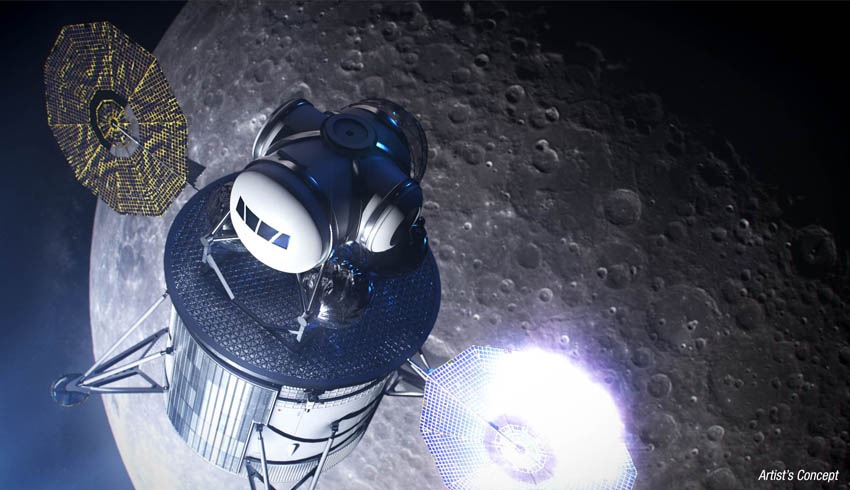
NASA hadn’t set a firm deadline for Mars and initially talked about mid to late 2030s, though it had also mused on a mission by 2033.
Initially, NASA proposed to return humans to the moon in 2028, but that was brought forward under a directive from the Trump administration.
The changed timeline is contained in a proposed funding authorisation bill, the National Aeronautics and Space Administration Authorization Act of 2020, which was introduced by the US House committee on science, space and technology last week.
As well as the changed timeline, the bill also makes some substantial adjustments to how NASA had proposed to conduct the Artemis Mission to return to the moon.
It says the Artemis lunar lander would be launched as a single component rather than in modules to be assembled in space.
Significantly, NASA would retain full ownership of the Artemis lunar landing system, called the Human Landing System. Currently, NASA is soliciting bids from industry for the lunar landing system.
NASA is working with several companies to study lander concepts. It then plans to fund development of one or two landers, which would remain owned by the companies, with NASA purchasing services.
The bill backs the proposed Lunar Gateway, a multinational space station with modules from NASA, Northrop Grumman and the European Space Agency, which would be placed in orbit around the moon as a jump-off point for crewed moon missions.
However, it proposes that Gateway be placed not in lunar orbit but in the Earth-moon Lagrange point, the gravitational null point between the Earth and moon.
The proposed bill also calls for establishment of a Moon to Mars program office, with its director and a Mars Enabling Technology Initiative.
That would be for the “purpose of developing and testing the technologies and capabilities needed for a human mission to Mars”. That includes development of engines, Mars landing systems, radiation protection, Mars transport vehicle, life support systems, Mars habitats and spacesuits.
The bill’s primary objective is to position the Artemis lunar program as a stepping stone for the bigger goal of landing humans on Mars.
At the same time, missions to the Moon would be required to reduce risk and to demonstrate capabilities and operations needed to support a human mission to Mars.
The proposed legislation may not survive intact, especially as NASA administrator Jim Bridenstine and others have expressed reservations.
“I am concerned that the bill imposes some significant constraints on our approach to lunar exploration,” he said in a statement.
“In particular, we are concerned that the bill’s approach to developing a human lander system as fully government-owned and directed would be ineffective.
“The approach established by the bill would inhibit our ability to develop a flexible architecture that takes advantage of the full array of national capabilities – government and private sector – to accomplish national goals.”
As well, the Commercial Spaceflight Federation, an industry group whose members include major space companies, wasn’t happy.
“As written, the NASA Authorization Bill would not create a sustainable space exploration architecture and would instead set NASA up for failure by eliminating commercial participation and competition in key programs,” it said.
Receive the latest developments and updates on Australia’s space industry direct to your inbox. Subscribe today to Space Connect here.












